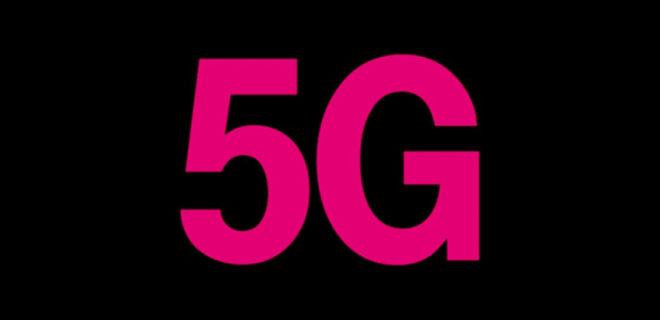
We already know that the 2.5GHz spectrum that T-Mobile gained as part of its merger with Sprint is having a positive effect on T-Mo’s 5G network, because we saw last week that some speed tests in New York City were breaking the 1Gbps barrier. But today a new report has come out that sheds a bit more light on the impact Sprint’s 2.5GHz airwaves are having.
In Philadelphia, Ookla Speedtest’s Milan Milanovic found that 5G download speeds basically doubled from the start of April to the end, going from 60.40Mbps to 119.82Mbps. Philadelphia was the first city to get 2.5GHz 5G from T-Mobile, with coverage going live on April 21. Before then, the city only had 600MHz-based 5G.
Peak 5G speeds in Philadelphia grew in April, too, surpassing 700Mbps, while average latency dropped from 30ms to 21ms.
The average download speeds of T-Mobile’s 5G network in New York City have grown, going from around 79Mbps in April to 98.96Mbps as of May 15. T-Mobile turned on 2.5GHz 5G in NYC on May 5, making it the first city to have T-Mobile’s full 5G “layer cake” with low-band (600MHz), mid-band (2.5GHz), and high-band (mmWave) 5G.
Today’s report also shows that T-Mobile is being more efficient with the 2.5GHz airwaves than Sprint. When Sprint launched its 2.5GHz 5G in New York City in August 2019, it was using 40MHz of bandwidth and producing speeds of 367Mbps. Meanwhile, T-Mobile is using the same amount of spectrum and getting speeds of 541Mbps, an improvement of 47 percent.
What’s more, T-Mobile boosted speeds to nearly 900Mbps by increasing the bandwidth on some sites in NYC on May 19, going from 40MHz to 60MHz.
Milanovic attributes the lower efficiency on the Sprint 2.5GHz network to a lower distribution of 256 QAM and MIMO. Sprint’s speeds could’ve also been affected by the radios running in split mode for both 5G n41 and LTE band 41, while T-Mobile’s radios are only using 5G n41 on 2.5GHz since T-Mobile’s mid-band anchor bands are LTE bands 2 and 66.
Today’s report also touches a bit on T-Mobile’s millimeter wave network, something T-Mo itself hasn’t said much about since launching it in parts of 6 cities last year. New York City is one of those 6 cities, and today’s report says that T-Mo’s mmWave coverage in Manhattan is “one of the most impressive” when it comes to cell density.
Using 100MHz of spectrum, T-Mo’s mmWave put out download speeds of more than 520Mbps. But T-Mobile can get similar speeds with just 40MHz of mid-band 2.5GHz thanks to 256 QAM and 4×4 MIMO, two features that the existing mmWave chips can’t offer.
T-Mobile hasn’t said much about its plans for mmWave, including when or where it’ll deploy more. But it does have 1,160MHz of mmWave spectrum nationwide after winning some airwaves in FCC auctions, and considering how much T-Mo talks about its “layer cake” 5G strategy, it’s likely that we’ll see T-Mobile do more with mmWave at some point in the future.
Until then, you can check out the full report on T-Mobile’s 5G network at the link below.
Source: Speedtest
